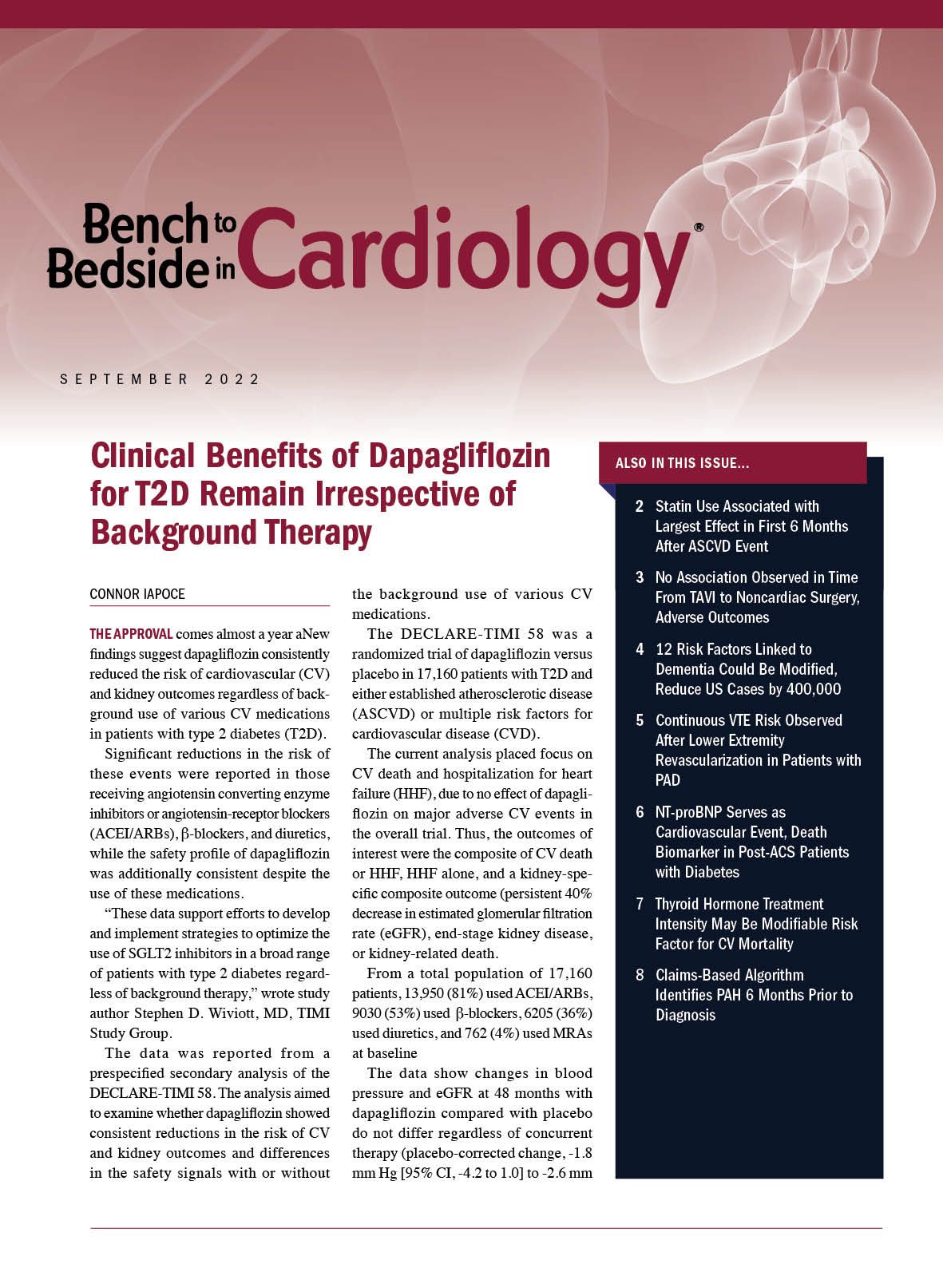Publication
Article
Bench to Bedside in Cardiology®
12 Risk Factors Linked to Dementia Could Be Modified, Reduce US Cases by 400,000
Author(s):
Preventable factors including obesity, hypertension, and physical activity are disparately impacting the rate of dementia among people of color.
Mark Lee, MA

Dementia among Americans, particularly those from Black and Hispanic backgrounds, is associated with modifiable and potentially preventable risk factors, according to a new study.
In findings from a cross-sectional analysis of nationally-representative survey data, a team of investigators observed that approximately 2 in every 5 cases of dementia in the US were attributable to any of a dozen pre-specified risk factors. Approximately half of such risk factors were associated with lifestyle choices among patients.
The team, led by Mark Lee, MA, of the department of sociology and Minnesota Population Center at the University of Minnesota, sought to calculate population attributable fraction (PAF) of dementia linked to 12 known and modifiable risk factors among US adults. They additionally interpreted PAF stratified by race and ethnicity in the national population.
They noted the two-fold increase in new dementia cases anticipated to affected Americans by 2050, a “looming epidemic” that has driven federal government-set goals to improve dementia treatment and prevention methods by 2025.
“Because treatments for dementia are currently limited, reducing potentially modifiable dementia risk factors may be the most effective way to curb future dementia rates,” they wrote. “Consequently, it is imperative to identify and target potentially modifiable risk factors that contribute to the dementia burden in the US population.”
Lee and colleagues referenced a recent Lancet Commission report using population-based observational study analysis and randomized clinical trial data to define 12 well-evidenced causal risk factors for dementia:
- Low education
- Hearing loss
- Traumatic brain injury (TBI)
- Hypertension
- Excessive alcohol consumption
- Obesity
- Smoking
- Depression
- Social isolation
- Physical inactivity
- Diabetes
- Air pollution
The team used relative risks and prevalence estimates established by the commission report and cross-sectional survey data from 2011 – 2018, respectively, for each of these risk factors to help calculate the PAFs. The combined PAFs were adjusted by investigators through weights from the Atherosclerosis Risk in Communities (ARIC) study from 1987 – 2018.
The analysis’ primary outcome was a PAF for each risk factor of dementia, a combined PAF, and decrease in number of dementia cases in 2020 that would be expected if a 15% proportional decrease in each exposure was achieved.
The relative risk associated and PAF of each identified factor, respectively, were as follows among US adults:
- Low education RR, 1.59 (95% CI, 1.26 – 2.01); PAF, 6.0 (95% CI, 2.7 – 9.8)
- Hearing loss RR, 1.94 (95% CI, 1.38 – 2.73); PAF, 8.9 (95% CI, 3.9 – 15.7)
- TBI RR, 1.84 (95% CI, 1.54 – 2.20); PAF, 12.0 (95% CI, 8.5 – 17.0)
- Hypertension RR, 1.61 (95% CI, 1.16 – 2.24); PAF, 20.2 (95% CI, 6.3 – 34.4)
- Excessive alcohol consumption RR, 1.18 (95% CI, 1.06 – 1.31); PAF, 0.7 (95% CI, 0.2 – 1.1)
- Obesity RR, 1.60 (95% CI, 1.34 – 1.92); PAF, 20.9 (95% CI, 13.0 – 28.8)
- Smoking RR, 1.59 (95% CI, 1.15 – 2.20); PAF, 4.9 (95% CI, 1.3 – 9.3)
- Depression RR, 1.90 (95% CI, 1.55 – 2.33); PAF, 6.2 (95% CI, 3.9 – 9.0)
- Social isolation RR, 1.57 (95% CI, 1.32 – 1.85); PAF, 6.7 (95% CI, 3.7 – 9.2)
- Physical inactivity RR, 1.39 (95% CI, 1.16 – 1.67); PAF, 20.1 (95% CI, 9.1 – 29.6)
- Diabetes RR, 1.54 (95% CI, 1.33 – 1.79); PAF, 12.5 (95% CI, 8.6 – 18.4)
- Air pollution RR, 1.09 (95% CI, 1.07 – 1.11); PAF, 2.2 (95% CI, 1.6 – 2.4)
The combined PAF of all 12 risk factors among US adults was 41.0% (95% CI, 22.7 – 55.9). The rates were greater among Hispanic (46.7%) and non-Hispanic Black (45.6%) adults than among non-Hispanic White (39.4%) and non-Hispanic Asian (35.8%) adults.
In considering the benefit of 15% reduction in risk factor prevalence against the estimated 5.8 million dementia cases among American adults in 2020, investigators stressed “tens of thousands of cases” could have been prevented.
“A 15% reduction in obesity prevalence (ie, from 44.0% to 37.4%), for example, would be associated with approximately 3.1% (95% CI, 2.0-4.3) lower dementia prevalence, which would correspond with approximately 182,100 (95% CI, 113,500 – 251,300) cases in 2020,” they wrote.
Reducing all 12 risk factors by 15% prevalence would have been associated with a 7.3% reduction in dementia prevalence, the team wrote. In 2020, that would have equated to approximately 427,000 cases.
They wrote that policy makers should prioritize preventive efforts against the prevalence of midlife obesity and hypertension as well as late-life physical activity, as those 3 risk factors are linked to the greatest fraction of US dementia cases.
“Continued efforts should be made to reduce racial and ethnic disparities in the 12 risk factors considered in this study, including addressing structural factors which underlie risk factor differences,” they concluded. “Doing so could help to achieve cognitive health equity among America’s rapidly diversifying population of older adults.”
The study, “Variation in Population Attributable Fraction of Dementia Associated With Potentially Modifiable Risk Factors by Race and Ethnicity in the US,” was published online in JAMA Network Open.






